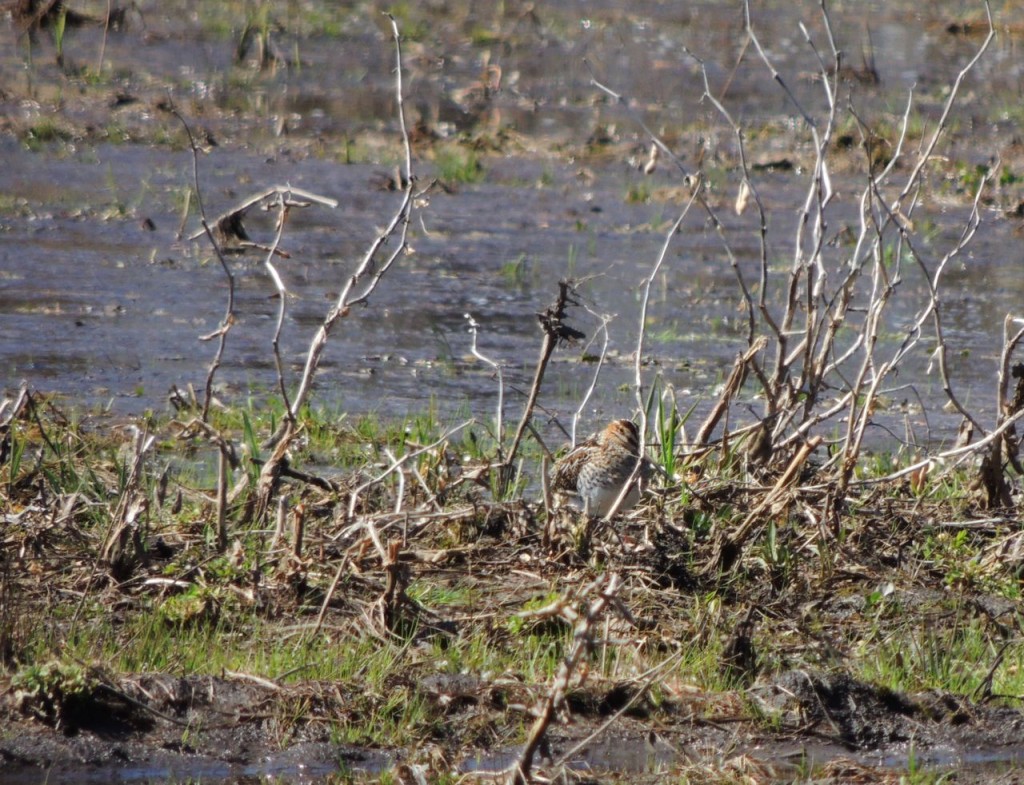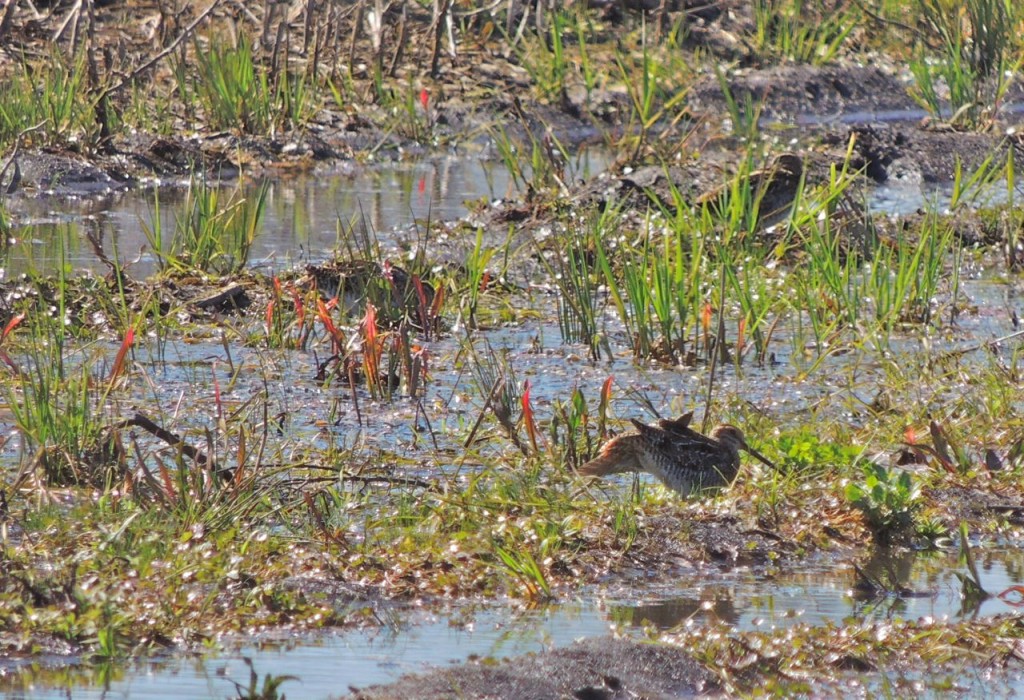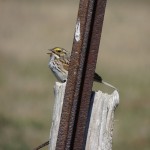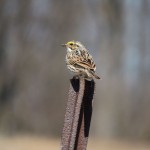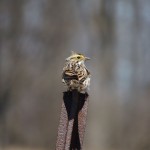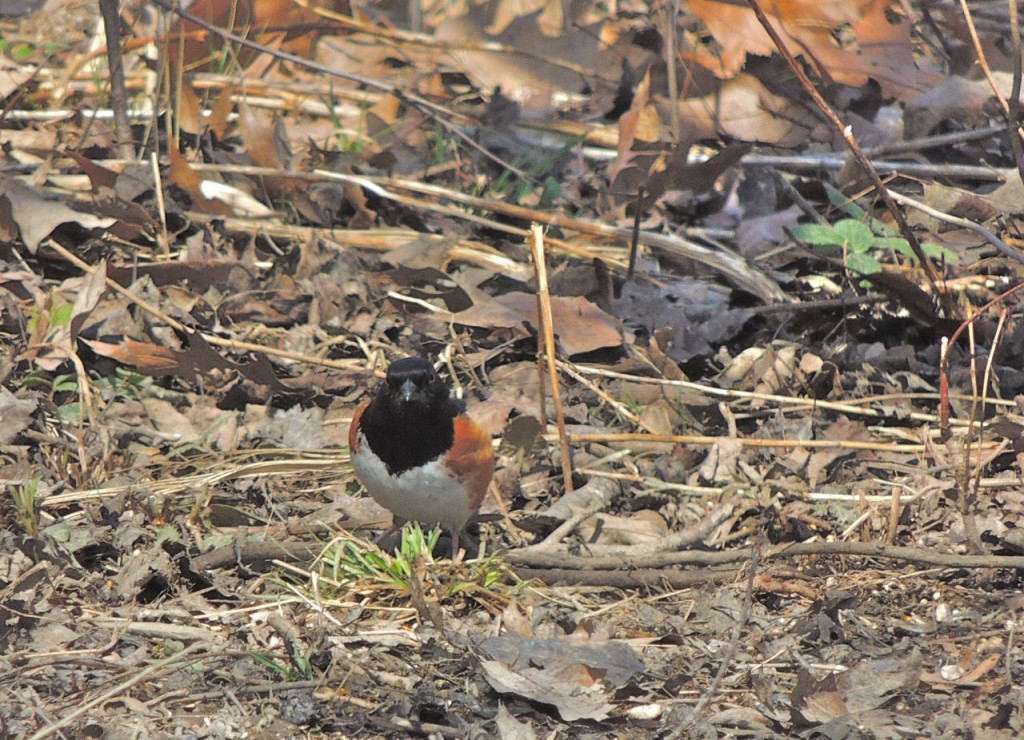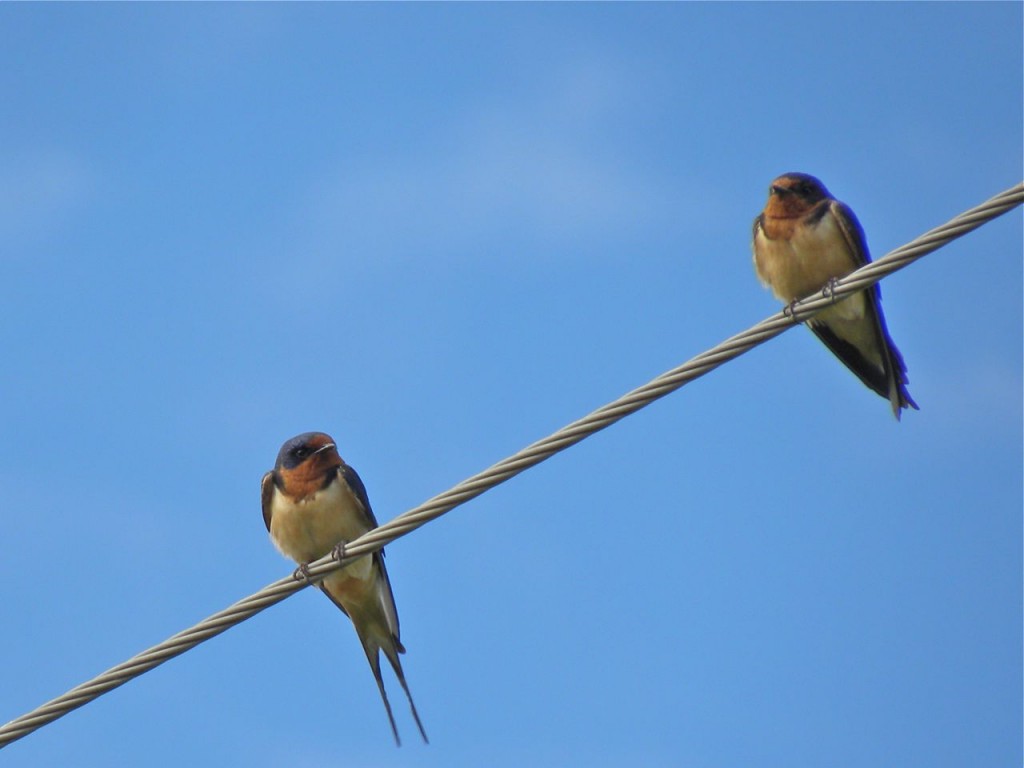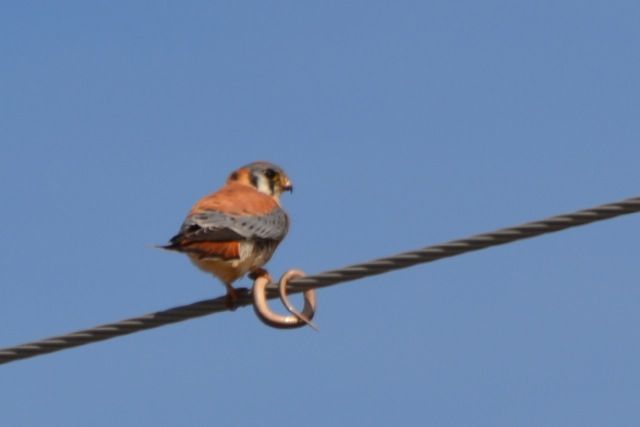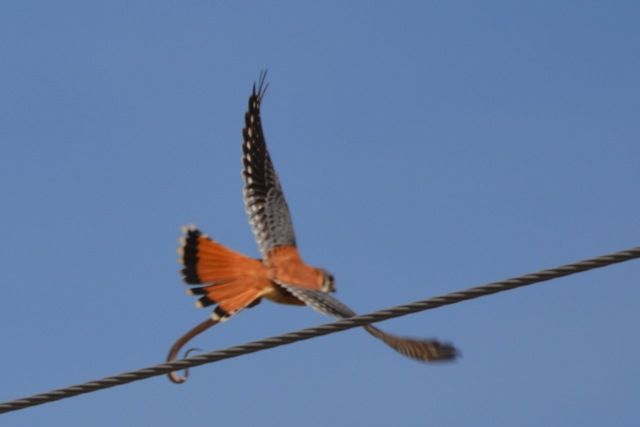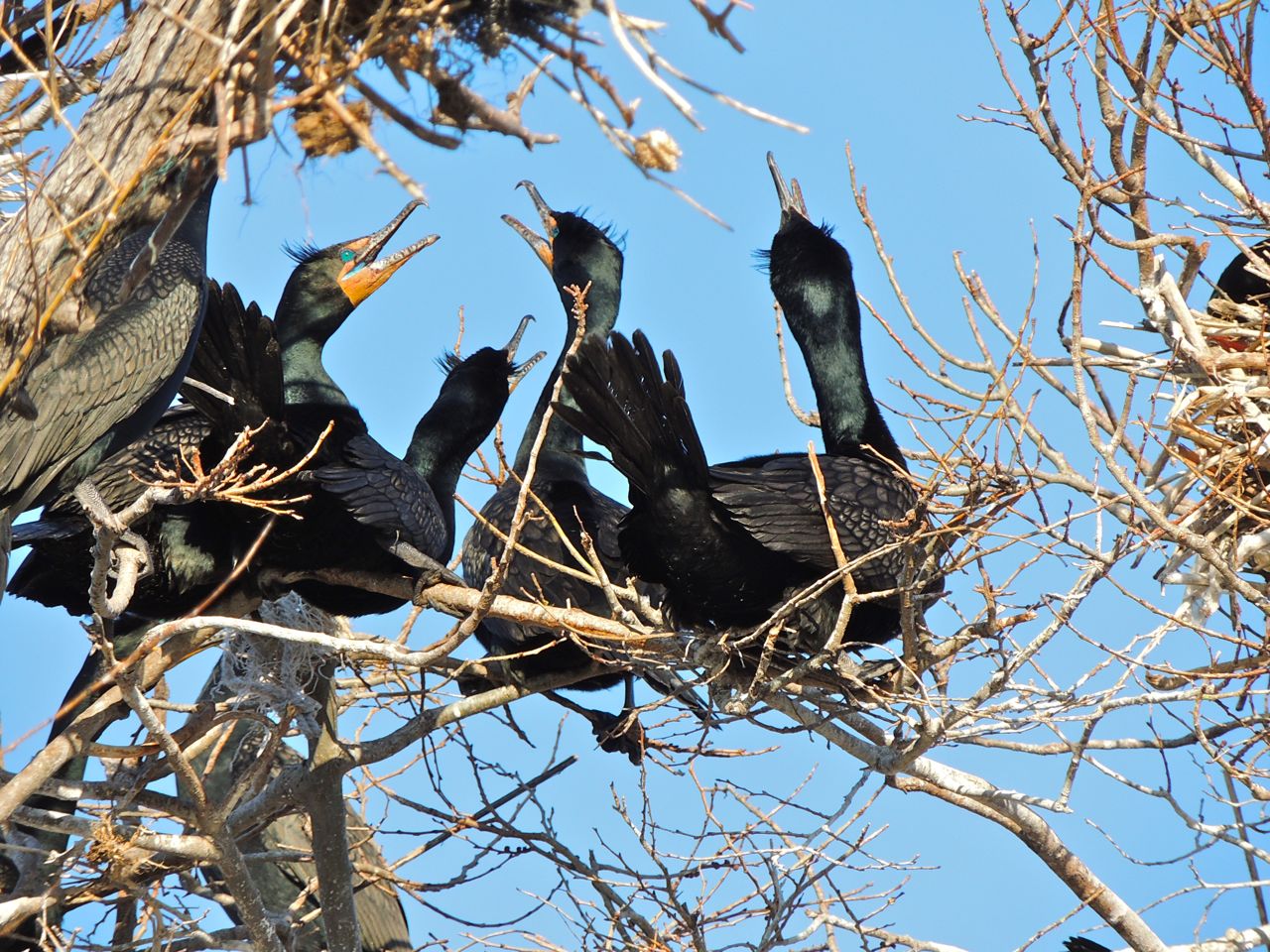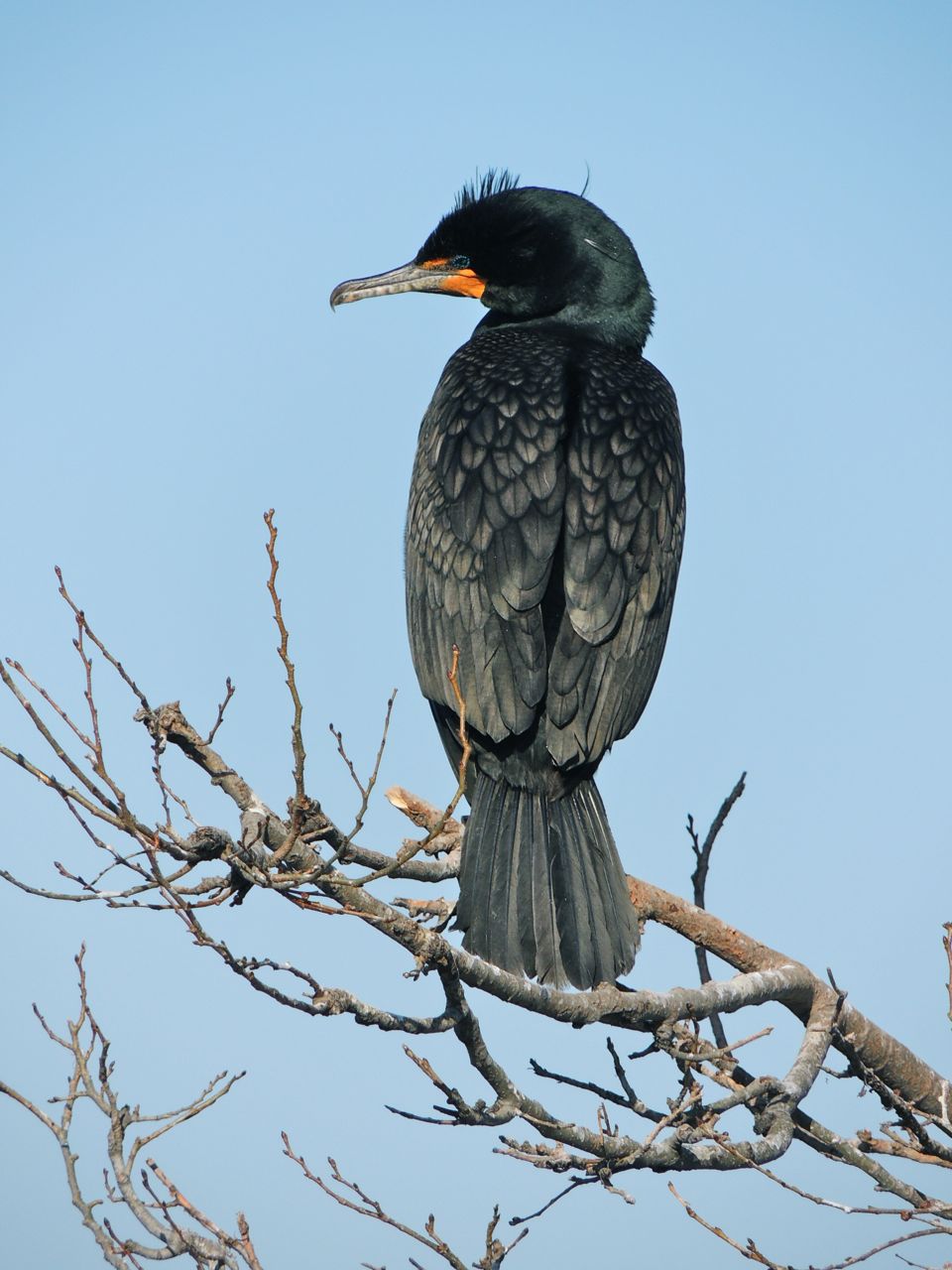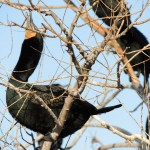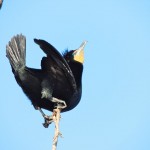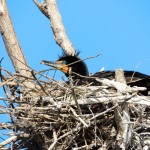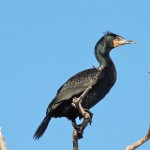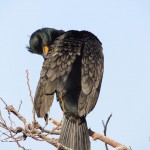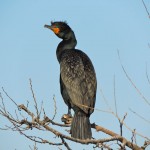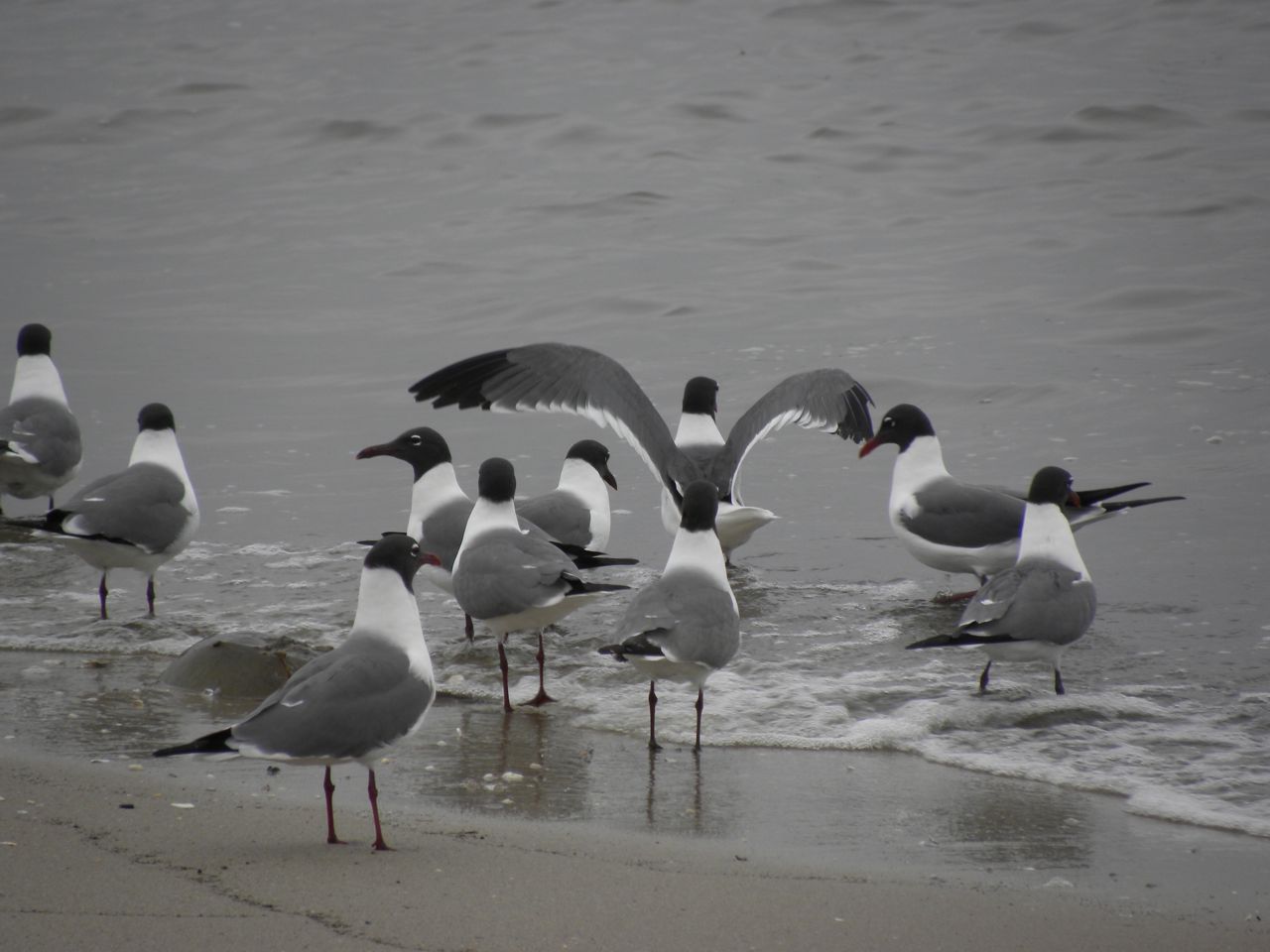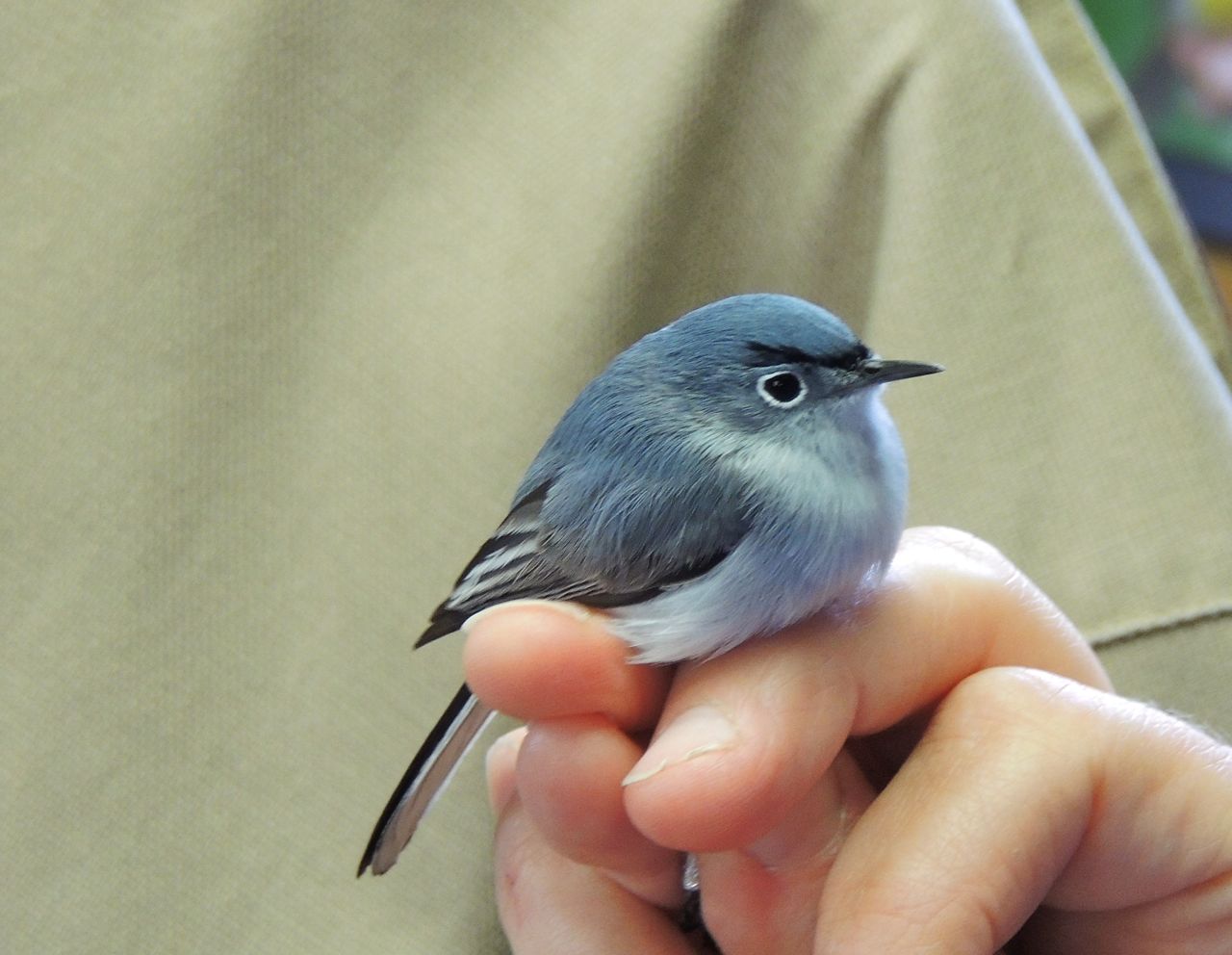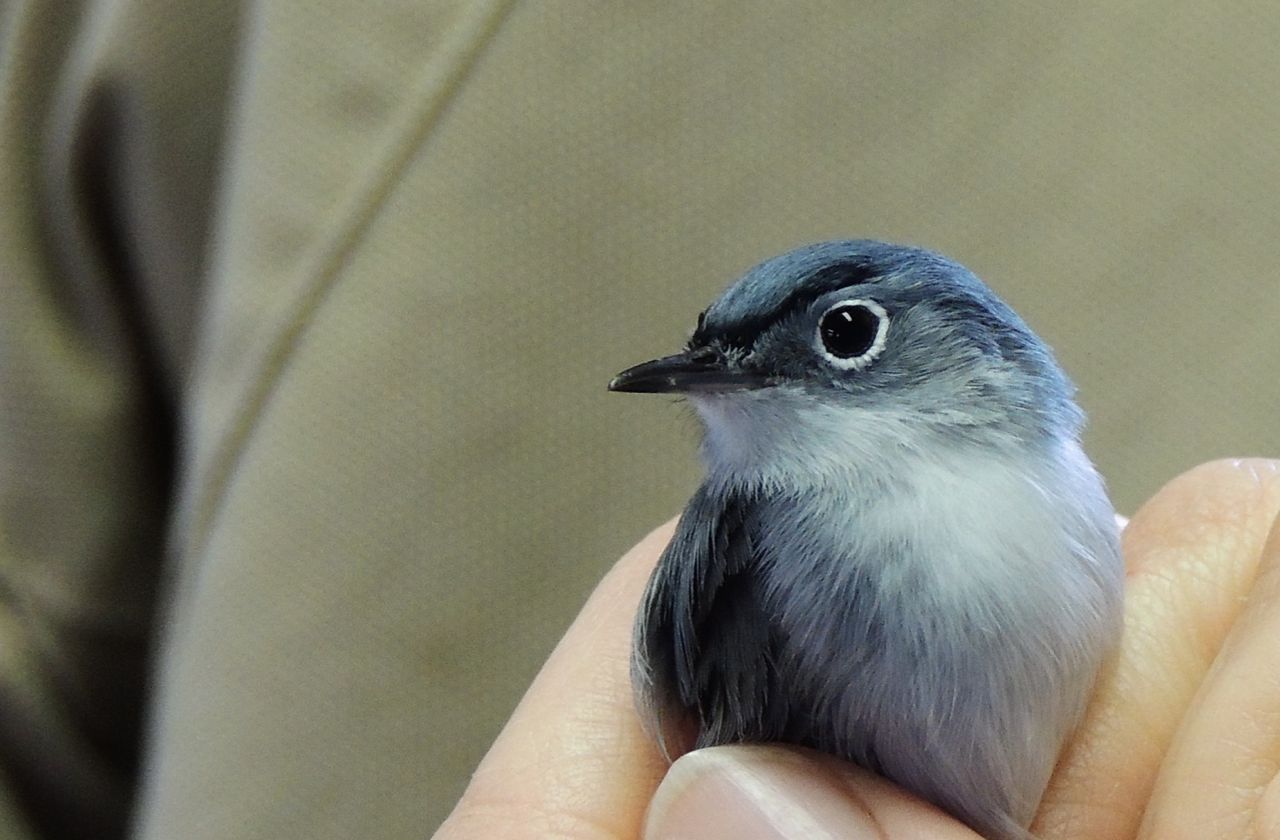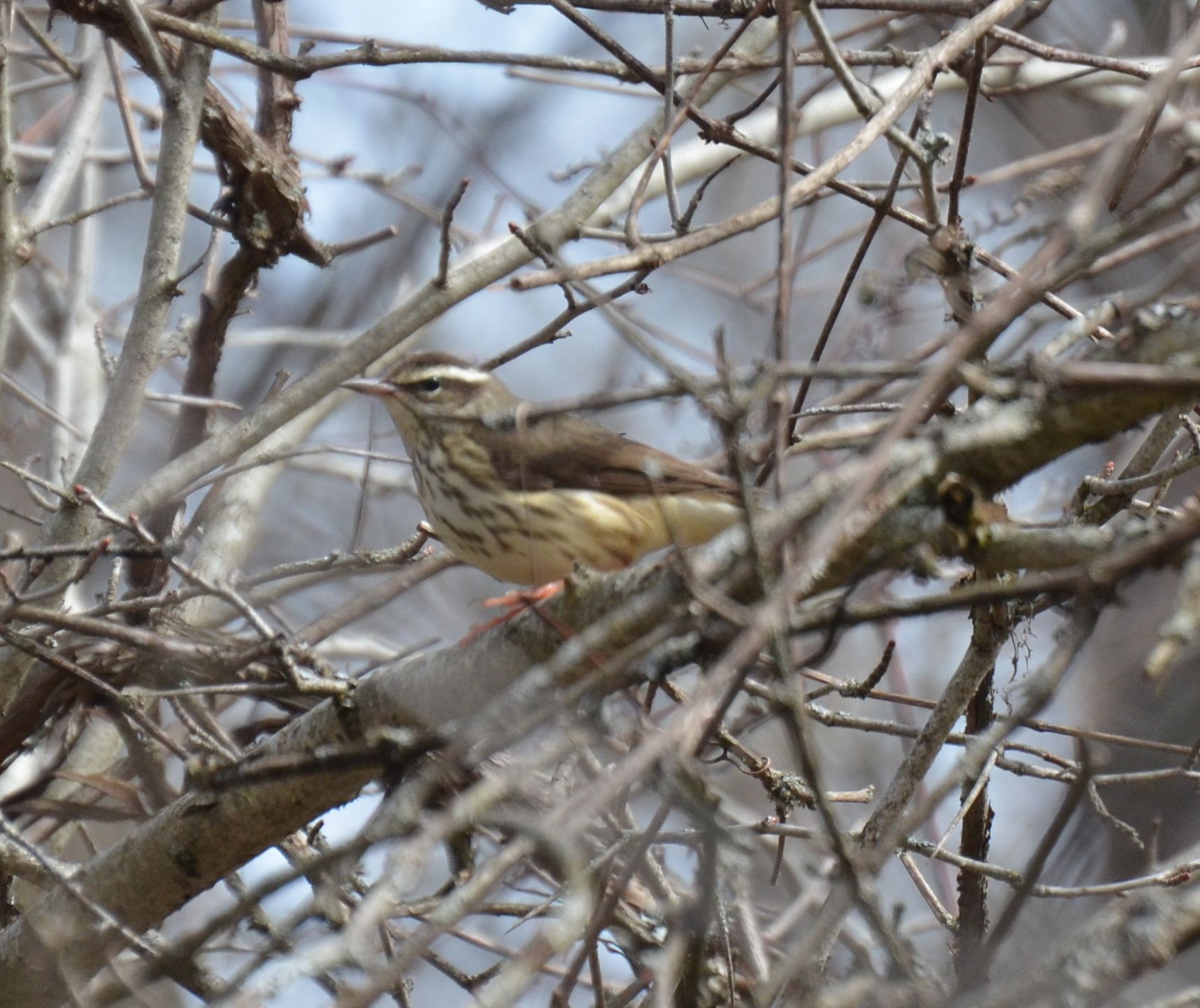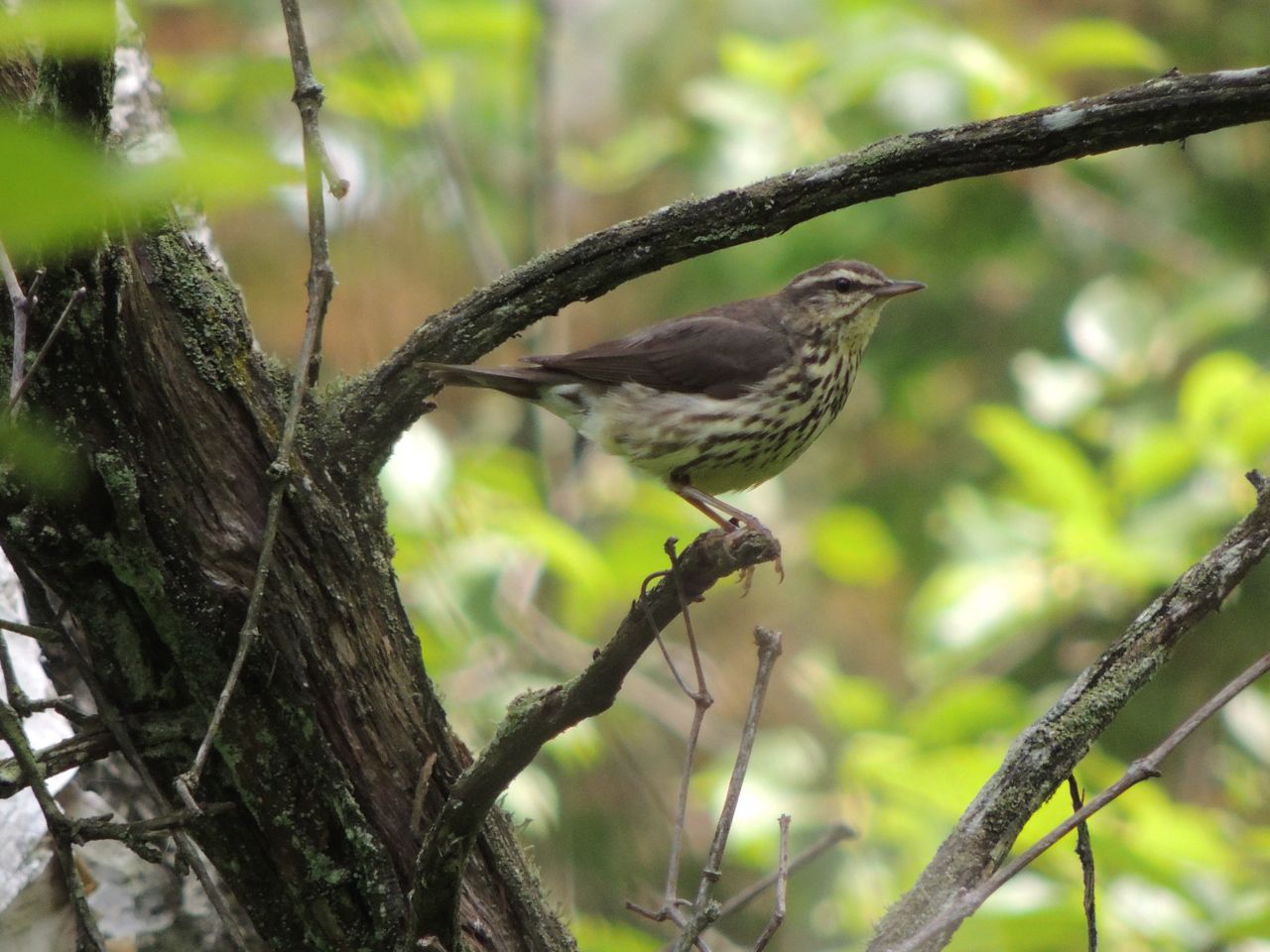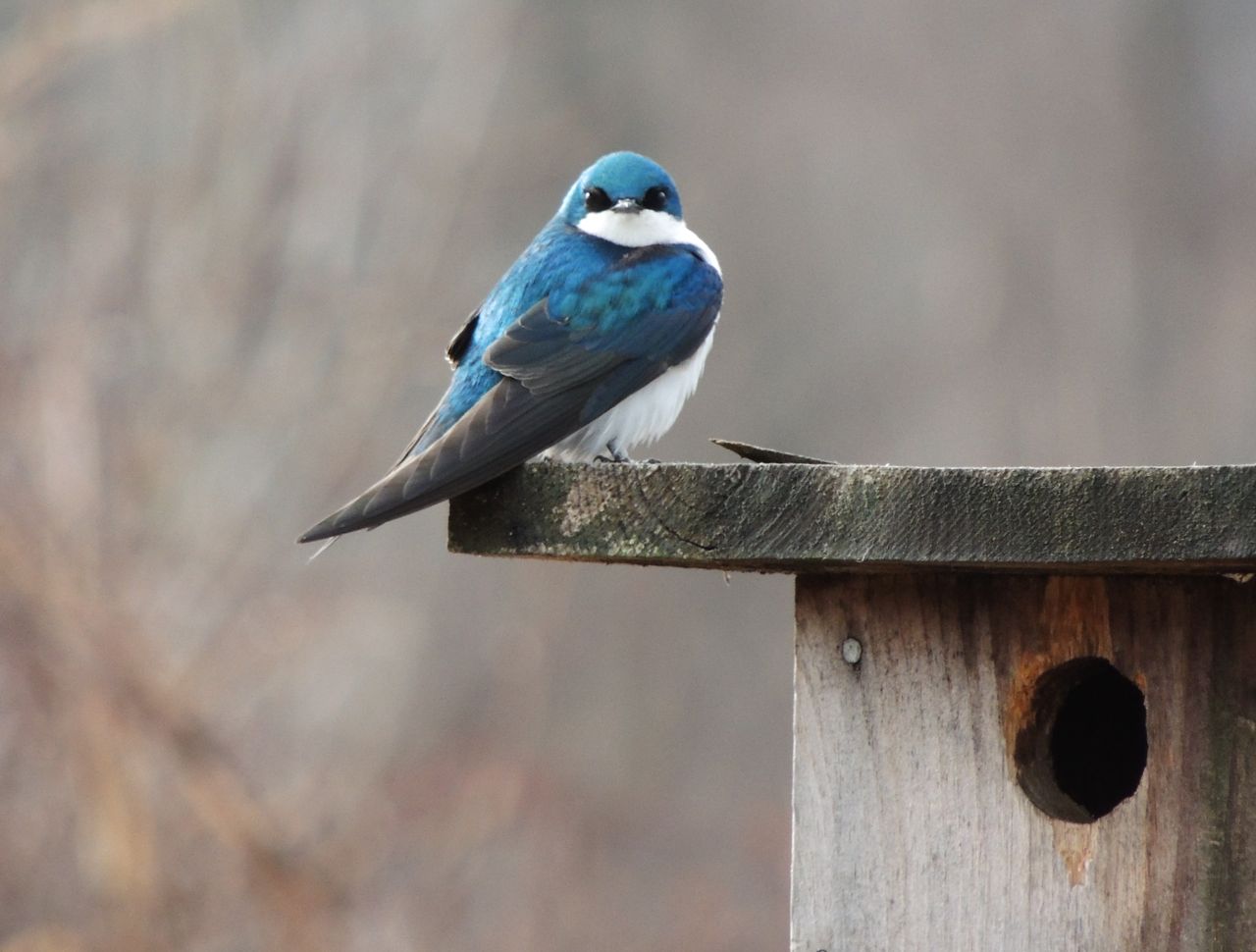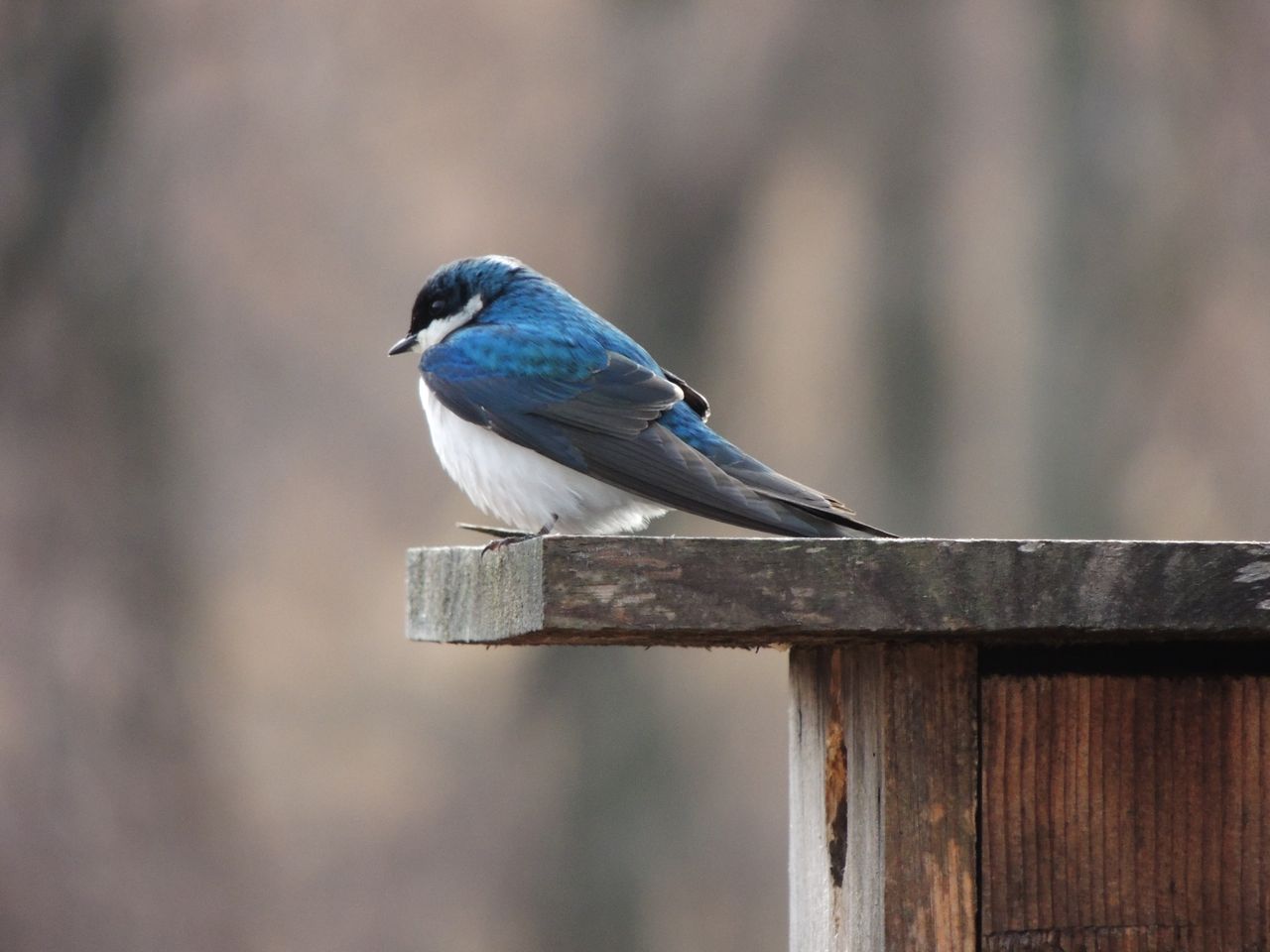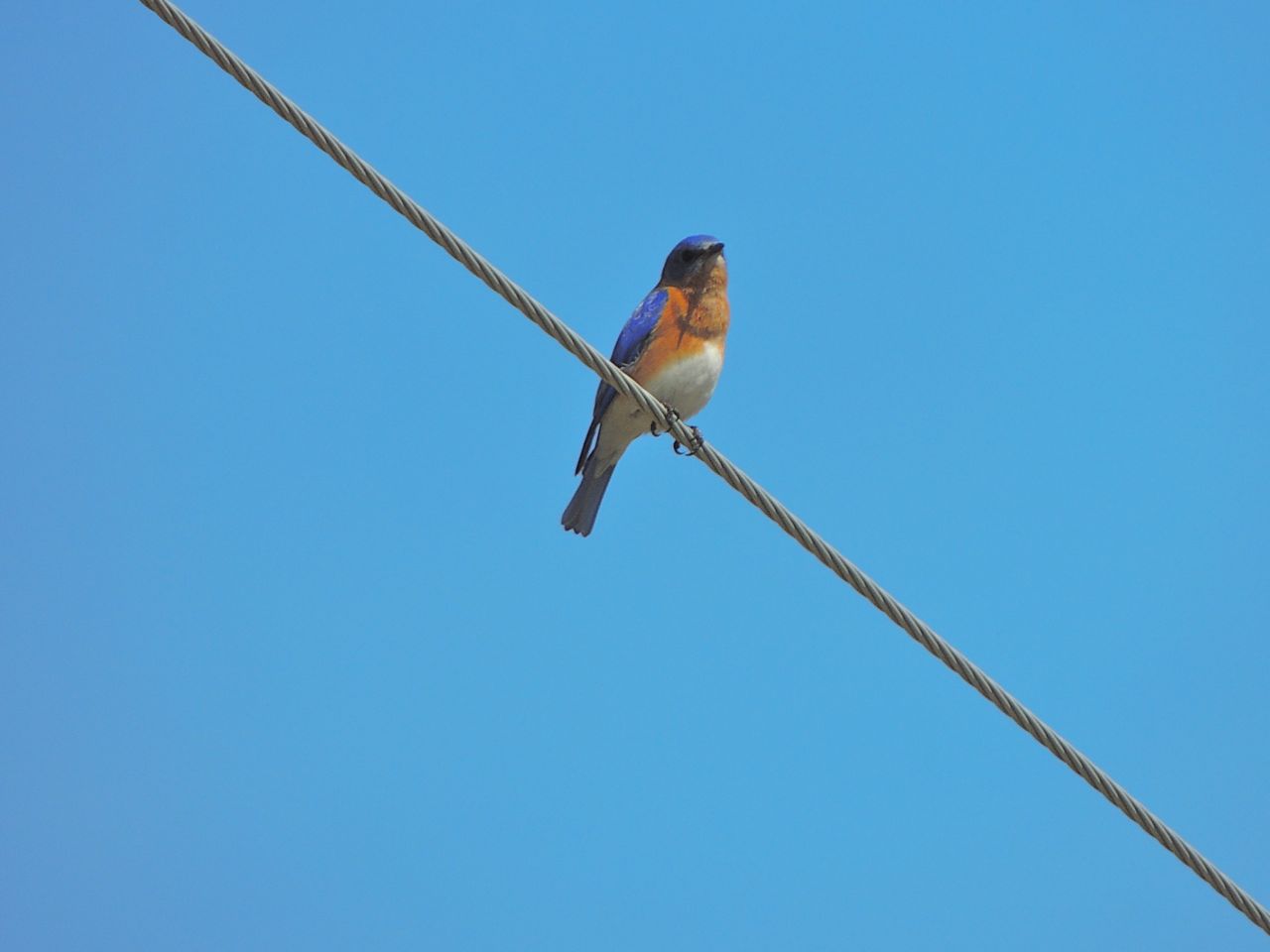23 April 2014. Vinemount ON. Any month of the year is capable of delivering a surprise bird, especially around here at the west end of Lake Ontario where a number of factors combine to deliver an extraordinary richness of bird life. April of course is thick with spring migrants anyway so a rewarding afternoon of birding was perhaps predictable. Not that the numbers of species was remarkable, it was more the “Oh my goodness” factor.
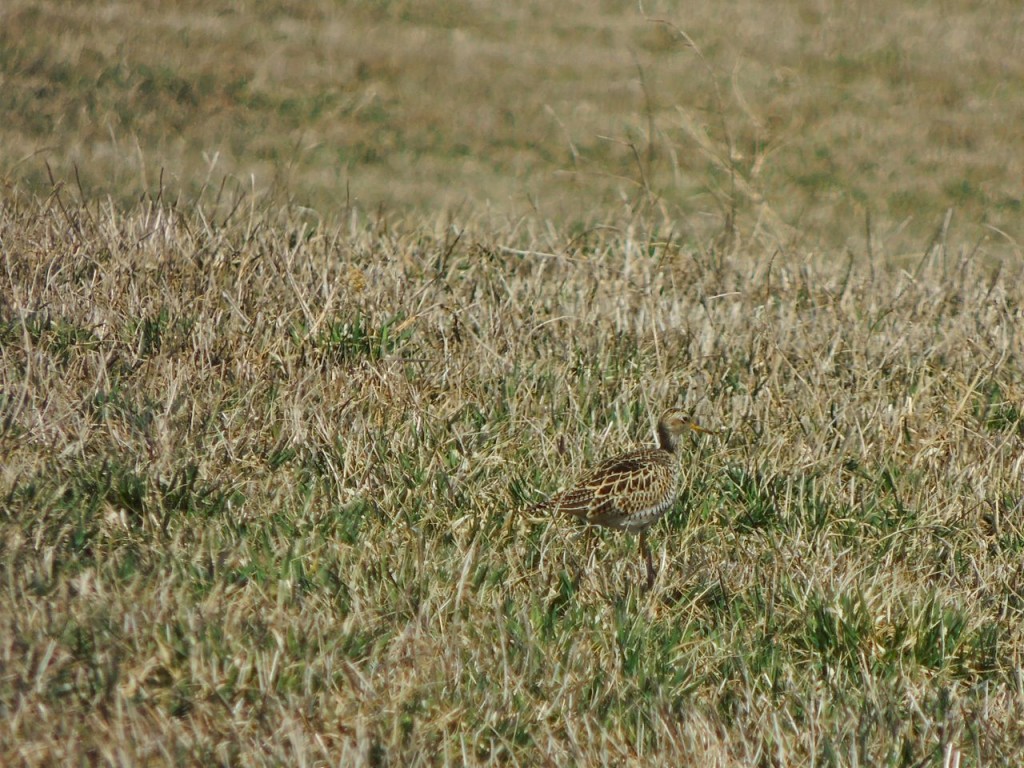
First (and foremost, and Bird of the Day) was a trio of Upland Sandpipers stalking around a dry pasture field. Visually Upland Sandpipers aren’t all that much, brown and mottled like many an easy-to-confuse shorebird, except that they don’t go anywhere near shores or water. Perhaps it’s their dainty appearance (scrawny neck and undersized head) and beady eye that gives them a certain appeal. Or maybe it’s their outrageously languid wolf-whistle of a call that makes birders cherish them. Really, it’s an exorbitantly drawn out and ascending “Wheeeeeeeeeet; pause; then followed by an equally long, descending exhalation “Wheeeeooooooo”. No ogling construction worker could possibly match it, however captivating the object of his desires.
But there’s something else about Upland Sandpipers that intrigues me. They arrive in mid-late April (today’s are right on time) to breed across a fairly narrow swath of the north and centre of the continent. They come here after spending our winter in Argentina, they stop around for barely four months, produce young and then fly back to Argentina. I’m not sure how long it takes to fly from Argentina to Ontario, but it’s got to be one or two months, which leaves very nearly half the year spent in Argentina where incidentally they don’t breed again. Now I know that what I’m going to say rather trivializes the matter, but wouldn’t you think they’d be better off staying in Argentina, where there’s plenty of grassland, and forgoing two almost back-to-back long-haul flights?
Well these three were a treat to see and I struggled to get some decent long-shot photos, but I’ve included a couple.
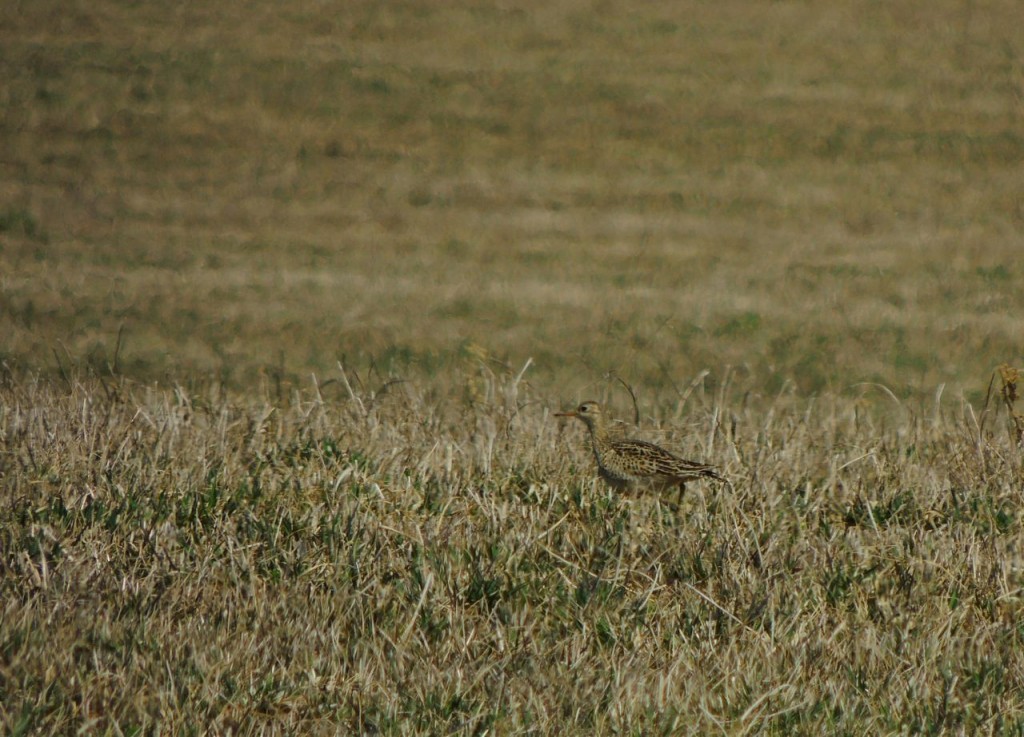
While I sat in my car watching the sandpipers, a Savannah Sparrow stopped atop a fence post in front of me and obligingly posed. He even squeaked out a few phrases of Savannah Sparrow song, “Tsit tsit tsit tsit tsit tseeeeeiii ur.”
Later on my way home I pulled to the side of a road to look over an expanse of flooded field and was, well kind of thrilled to find upwards of fifteen Wilsons Snipes lurking there, most of them biding their time and resting. Again I struggled for photos but was moderately pleased with these.
